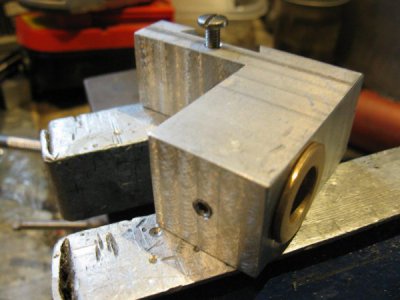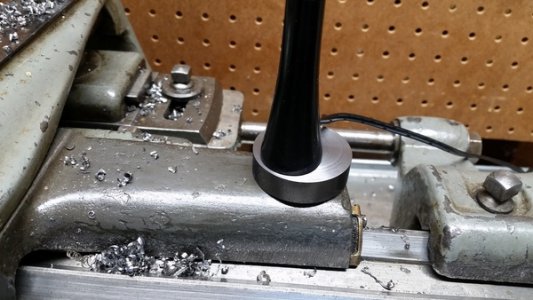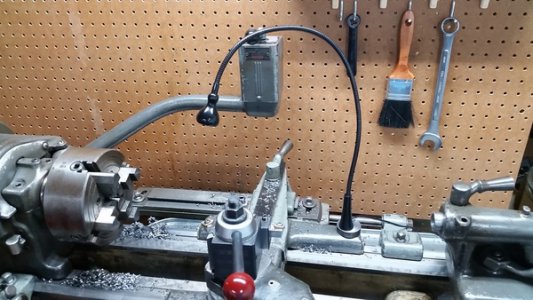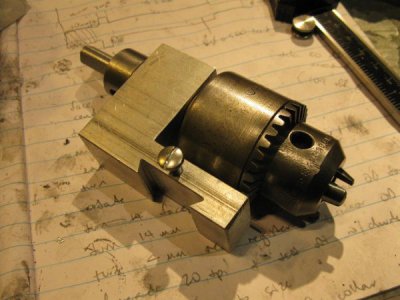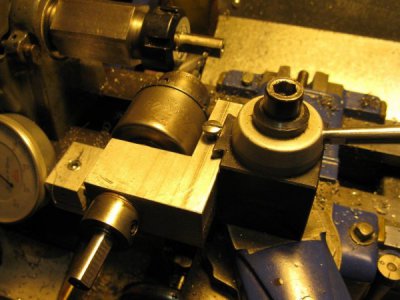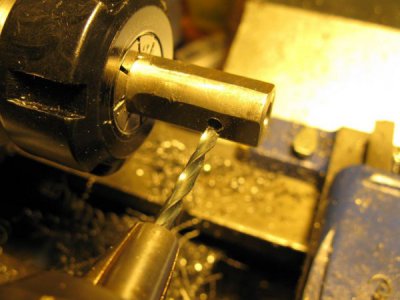- Joined
- Apr 21, 2015
- Messages
- 894
You won. My internal threading tool didn't work very well. I didn't have enough clearance to get the full thread depth, and it was already flexing quite a bit. Started out as 1/4" round CRS with a 9/32" perpendicular hole near the end for a piece of the shank of a broken 9/32" drill bit, Loctited in. I ended up turning it down to about 0.2" after the first failed clearance effort and then it still didn't work. The bar rubbed before the bit reached the thread root, and the bit couldn't be any longer or the whole tool wouldn't have fit inside the minor diameter drilled hole (0.4xx, I forget the exact figure now). It was already flexing enough (3 passes at the same depth before the spring cuts were done) that I didn't feel it would be worth trying to shave the bar any further.ah, right - yours is a double ended motor, that's interesting. I would use the existing pulley, turn it down and press fit the new drive pulley on top. Then take the motor shaft out, mount it between centers and turn the new drive pulley true. If you don't need to reverse the motor, just orient the motor so that the shaft is turning against the threads (ie. won't loosen) and then wire it so that it turns in that direction.
I wasn't interested in spending any more time trying to make a different threading tool from what I have on hand (just a worn-out spade bit; I did order some drill rod for next time), so I just turned the 1.15" poly-v original drive wheel down to 1.02" (it left maybe 5-10% of the original V roots, which gave the extra thickness somewhere to deform into), and pressed it into a scrap piece of 2" OD, 1" ID (nominal, visibly eccentric) piece of mystery steel tubing. I would have liked to have bored the ID to be concentric first, but then it would have been too large for the existing drive wheel. A couple dozen passes with the deburring tool cleaned up the slight mushrooming of the aluminum at the very face and it now mounts solidly.
I can mount the flywheel end in the chuck (without the flywheel) and this new end will fit nicely on my live center. Hopefully I'll be able to turn it down this evening and then all the hard parts of the 2x72 will be done. All that will be left is mounting the motor and idler/tracking wheel at consistent distance from the frame, then two more wheels on an arm for the platen. Everything else can be built as I need it, later on.


